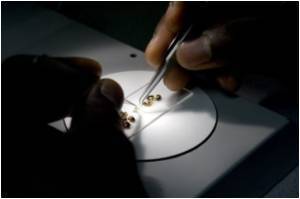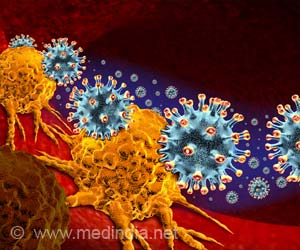Scientists have shown how the Seneca Valley Virus breaks into the cancer cells, while leaving other cells untouched.

‘The structure demonstrates how Seneca Valley Virus discriminates between its preferred receptor (cancer cells) and other similar proteins (healthy tissue).’





He hopes the results from this latest study, published in Proceedings of the National Academy of Sciences, will help to develop the virus for clinical use. Working with researchers from Japan's Okinawa Institute of Science and Technology, the group used cryo-electron microscopy to capture thousands of images of the virus bound to its receptor, using them to reconstruct a high resolution structure of the complex.
The virus is a strong contender for effective virotherapy because it selectively targets a receptor found only in tumor cells in more than 60 per cent of human cancers.
The receptor, a protein called ANTXR1, is expressed on tumors, but it has a cousin, ANTXR2, that only appears on healthy tissues. SVV doesn't bind with the similar receptor on healthy cells - it only shows strong affinity for ANTXR1.
SVV has already demonstrated its cancer-fighting abilities in clinical trials, but there is one problem - the body builds up immunity to the virus within a couple of weeks.
Advertisement
Lead author and Otago PhD candidate Nadishka Jayawardena says he has "always been intrigued" by how naturally occurring micro-organisms can be used for human benefit.
Advertisement
Source-Eurekalert















